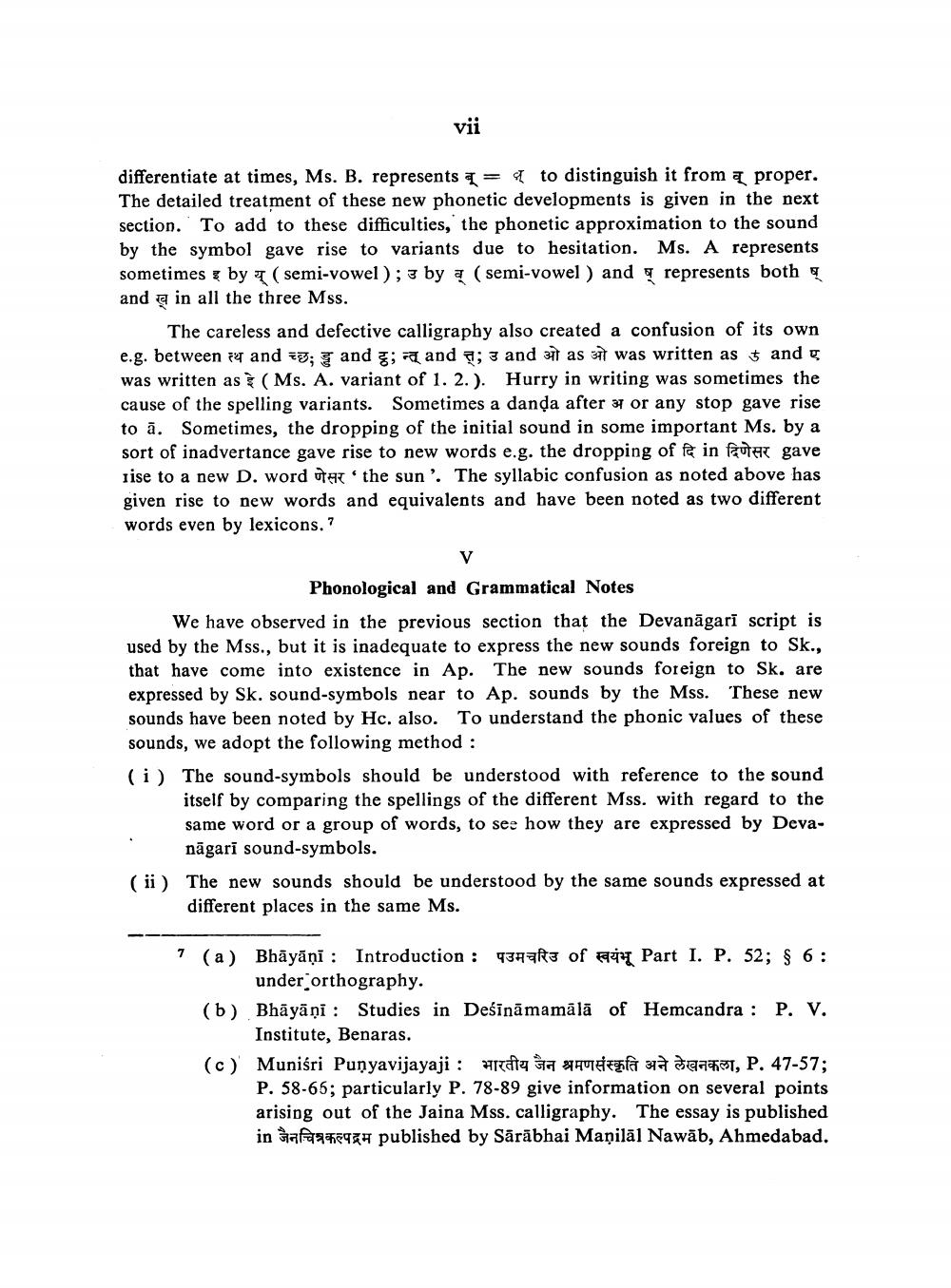________________
differentiate at times, Ms. B. represents = s to distinguish it from a proper. The detailed treatment of these new phonetic developments is given in the next section. To add to these difficulties, the phonetic approximation to the sound by the symbol gave rise to variants due to hesitation. Ms. A represents sometimes by I (semi-vowel ) ; 3 by a (semi-vowel ) and represents both and a in all the three Mss.
The careless and defective calligraphy also created a confusion of its own e.g. between 74 and ; and g; z and 7; 3 and 4 as 3 was written as $ and y was written as (Ms. A. variant of 1. 2.). Hurry in writing was sometimes the cause of the spelling variants. Sometimes a danda after 37 or any stop gave rise to ā. Sometimes, the dropping of the initial sound in some important Ms. by a sort of inadvertance gave rise to new words e.g. the dropping of in futet gave rise to a new D. word in the sun'. The syllabic confusion as noted above has given rise to new words and equivalents and have been noted as two different words even by lexicons.?
Phonological and Grammatical Notes We have observed in the previous section that the Devanāgarī script is used by the Mss., but it is inadequate to express the new sounds foreign to Sk., that have come into existence in Ap. The new sounds foreign to Sk. are expressed by Sk. sound-symbols near to Ap. sounds by the Mss. These new sounds have been noted by Hc. also. To understand the phonic values of these sounds, we adopt the following method : (i) The sound-symbols should be understood with reference to the sound
itself by comparing the spellings of the different Mss. with regard to the same word or a group of words, to see how they are expressed by Deva
nāgari sound-symbols. (ii) The new sounds should be understood by the same sounds expressed at
different places in the same Ms.
7 (a) Bhāyāņi: Introduction : 9385R3 of in Part I. P. 52; § 6 :
under orthography. (b) Bhāyāņi: Studies in Deśināmamālā of Hemcandra : P. V.
Institute, Benaras. (c) Muniśri Punyavijayaji : arata a la fase , P. 47-57;
P. 58-66; particularly P. 78-89 give information on several points arising out of the Jaina Mss. calligraphy. The essay is published in afaragh published by Sārābhai Maņilāl Nawāb, Ahmedabad.




